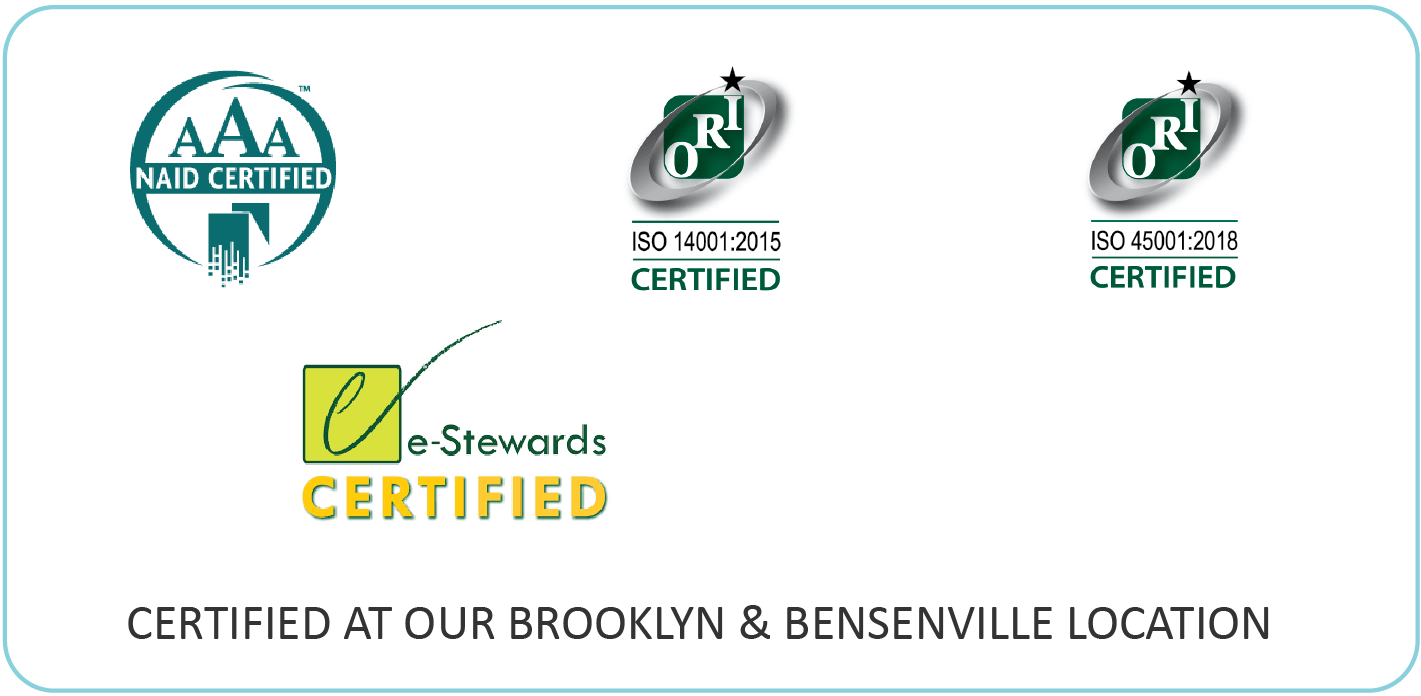A Breakdown of Arrow Electronics’ ITAD Sector Shutdown

Last week, Arrow Electronics announced it would shut down its ITAD sector. By August 5th the company plans to stop receiving equipment at their facilities. The news came as a surprise to both their clients and staff.
In response to the sudden closure, our team released a special podcast with Liquid Technology’s Managing Partner, Richard Greene. Steve Sidwell, Liquid Technology’s SVP of Technology & Compliance, hosted the episode. During the interview, Greene addressed some of the Arrow’s claims about the industry, explained how to find a new ITAD vendor and more. Read the transcript from the podcast interview below.
Steve: Rich, you have a run 19 years of experience in the ITAD Industry Arrow CEO, Mike Long recently said “we believe this business is not sustainable over the long term” now he’s referring specifically to the ITAD industry. Do you agree with that?
Rich:Um, no, not really. Um, I think it wasn’t sustainable for Arrow because it wasn’t their focus. It wasn’t, think the smallest sector of their business. Um, there’s many, there’s hundreds of viable companies across the world that still do just ITAD or their focus is ITAD or it’s a major part of the business.
Steve: Why do you think Arrow had challenges?
Rich: I mean for when I read the press release, it sounds like that they were relying on one client in particular that was a major part of the business. And if you read the articles, it sounds like it was Huawei, you know, which is a large Chinese company, which is obviously had a lot of challenges lately. You know, and then it seemed that once they we’re losing money, losing money on that business, uh, or the goal are getting revenue from it. They had to make decisions about their business in terms of what was successful and what’s not. So they’re jettisoning as a lot of companies do non-core product. And that was always my wonderment about Arrow like why they decided that this was a good fit to their business. And sure enough, you know, in a fairly short amount of time after making a lot of acquisitions, I mean less than five to seven years, they decided to totally get out of it.
Steve: Do you agree with their initial strategy of growing through acquisitions?
Rich: I think that’s a good strategy to grow through acquisitions. But the thing is, is a lot of companies, no, you have to do well and they didn’t do it well. I think there was a lot of client, dissatisfaction, when they, the existing company and then they went to the new parent company and got service and the service was not on the same level. I think they had a lot of, attrition staff or they let a lot of stuff go. And I just don’t think they managed it well. They thought it was something that they could just, buy into and not, I think really focused on.
Steve: In the past have you worked with Arrows clients? And if so, like what’s been your experience with that?
Rich: I mean pretty much with just what I was just talking about, which is, as I transitioned to Arrow, a lack of service. I do kind of look at it synonymous with, you know, going to maybe your major bank, but having, you know, it’s fine maybe for your day to day banking, but if you’re a business, you’re often going to have special needs, maybe short timeframes, maybe a greater security concerns and that they really weren’t filling that bill. So I think they piece by piece people in companies, including ours, we’re able to take clients from them.
Steve: What advice would you give to all the IT asset managers out there who, like pretty much up until this week we’re using Arrow?
Rich: You mean, aside from giving me a call? I think to evaluate, you know, if they’re looking for new ITAD vendors to really look at the process. You know, I do think sometimes people do, some people know too, and some people forget to look at the, a couple of big pieces, one of which is the waste component of it. What happens to your E-waste? What kind of certifications, does your waste provider have, can provide globally, as well as data destruction. Whether they can do on and off-site data destruction for you? What kind of standards they are adhering to. And I would also say how they handle your assets. Are they experienced in all different types of assets? And in one piece I think some people forget too is logistics, the security of logistics, the efficiency of logistics. I do think sometimes people focus on cost more than the security and the security is a big, big piece in terms of the transportation of your assets, which some may have data on.
Steve: So then the big pieces you’re saying, it sounds to me like is security logistics, getting that back quickly back safely, getting the most money on your resale of your assets and then not forgetting to really pay attention to that last piece, which is great. Oldest stuff that didn’t sell or that they didn’t buy out. What happened to all of that? Where did the actual waste go? All of the commodities and the chemicals and all the scrap. What happened to that? And that’s you’re saying that’s where the certifications really come into play that known what that downstream looks like.
Rich: Absolutely. I mean there’s some good certifications out there. People need to follow them. I do think that, eStewards in particular has done a really good job in tracking and showing people where the assets actually go, even from certified vendors, even from their own certified vendors and then throwing people out if necessary. I mean this is what, this is what makes it work on the escrap side, which is obviously another story, but, I do think that the United States can be a leader here. And with, I mean it’s really the industry which has kind of supported these guidelines more than the government, but, however it’s done, it really should be done because there’s a lot of health and safety issues around this.
Listen to the complete podcast episode here.


